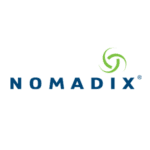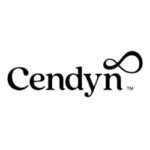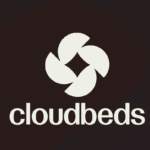 Open enrollment is a busy time in which employees have the option to choose or change their benefits, including health insurance, life insurance, vision insurance, and dental insurance. It’s the only window of opportunity for employees to enroll in or change their benefits without a qualifying life event, so getting all the employees to enroll before the deadline can be a challenge for HR teams.
Open enrollment is a busy time in which employees have the option to choose or change their benefits, including health insurance, life insurance, vision insurance, and dental insurance. It’s the only window of opportunity for employees to enroll in or change their benefits without a qualifying life event, so getting all the employees to enroll before the deadline can be a challenge for HR teams.
With this complex and challenging period right around the corner, HR teams may be scrambling to get everything in order. However, with careful planning and effective strategies, you can streamline your open enrollment process and ensure a smoother experience for everyone involved.
Start early and communicate often
With open enrollment, it’s best to start as early as you can. This gives you ample time to prepare, communicate, and address any potential problems before the open enrollment period begins. Proactive planning can reduce any last-minute confusion and ensures a smoother, more organized process.
Ideally, you should announce upcoming open enrollment at least six to eight weeks ahead of the enrollment period. Inform your employees about the key dates, deadlines, available benefits, and any changes from the previous year. Starting early gives employees time to ask any questions or address any concerns to ensure they’re ready for open enrollment.
After the initial announcement, send reminders as the enrollment period approaches and during the window. Use multiple channels, including internal newsletters, email blasts, and your company intranet, but keep the messages concise and targeted. Sending a lot of information about open enrollment in a single go can be overwhelming.
Simplify and streamline supporting processes
Benefits information can be mystifying to employees. Ensure the enrollment forms are straightforward and easy to understand. Use clear language, avoiding any unnecessary jargon or legalese.
You should optimize your forms for mobile devices, allowing employees to complete the process from their smartphones or tablets. This will make the process more convenient and accessible. Benefits technology solutions can ensure that your employee forms are mobile friendly.
Encourage active enrollment
Some employees prefer to roll their benefits over from year to year, but that can leave them with a plan that doesn’t suit their needs. Neither your company nor the employee will get everything they can out of their benefits.
Passive enrollment may save time, but it’s not ideal. Active enrollment is more engaging, ensuring that employees are invested in the process. With active enrollment, employees must review and evaluate their past choices, current needs, and available options, ensuring that they make informed decisions that are best for them in their current circumstances.
Offer support for employees
There are many ways to educate your employees about benefits. You can offer webinars to provide a broad overview of benefits and address common questions, such as questions about healthcare for family members or coverage levels and costs.
It may help to schedule one-on-one sessions with a benefits call center to offer personalized guidance and to answer specific questions your employees may have. This can serve as a resource to provide information, resolve problems, and offer guidance on benefits topics without placing additional administrative burden on your HR team.
Some employees may prefer self-service tools, such as decision support tools and calculators available on benefits technology platforms. These tools help employees assess their options based on their individual circumstances. These tools can simplify the decision-making process and ensure that your employees fully understand the impact of their benefits decisions.
Leverage benefits technology fully
Benefits technology can be a great asset during open enrollment. Use your benefits technology platform to automate enrollment processes, data management, and reporting. This ensures that there are minimal errors from manual data entry and administrative workload, streamlining the entire enrollment experience for both employees and HR teams.
Your benefits technology should integrate seamlessly with your payroll, other HR systems, and carriers. This integration provides efficient data transfer and minimizes duplicate work or discrepancies. If your solution doesn’t offer automation and integration, you may want to consider upgrading to get the most out of your platform.
Gather employee feedback
Your employees can offer a lot of insights into your open enrollment process and potential areas for improvement. Conduct post-enrollment surveys to gather employees’ opinions on the enrollment process, including questions relating to clarity, ease of use, and overall satisfaction with the benefits offerings.
Once you have the results, analyze your survey results to identify common issues or areas for improvement. Use this feedback to develop your strategy for next year and make the necessary adjustment to prepare for the next enrollment period.
Enlist the help of a technology partner
Open enrollment can be overwhelming, but a technology partner can be a great asset. Benefits technology partners can offer specialized solutions to manage benefits administration, streamline processes,. Their expertise is crucial to avoiding common pitfalls and roadblocks that make the process frustrating
In addition, technology partners can provide you with ongoing support and updates to address any challenges that come up throughout the year. Instead of fixing problems after they occur, you can optimize your benefits management process and stay ahead of potential problems.
Plan well in advance for the next year
When open enrollment is finished, you should start working on your plan for next year. Make sure you set clear, defined goals for next year’s enrollment, such as reducing manual errors, improving employee satisfaction with the benefits process, or maximizing benefits usage.
For example, are your employees using the benefits they elected? Do they need more educational resources to understand their benefits, or are they encountering friction in the process and getting frustrated?
Conversely, your employees may not know what some of the available benefits are or their value. If that’s the case, you can promote them through internal communication, such as emails and internal newsletters, and highlight their value to increase usage.
Define your success metrics to measure progress and ensure you’re on track to reach your goals. Some key metrics include enrollment rates, employee satisfaction levels, and HR workload. Tracking and analyzing your progress help you identify areas for improvement and guides future planning.
Use the insights you gained from employee feedback and metrics to make ongoing improvements. Always review and adjust your strategies to enhance the open enrollment experience each year.
Get ready for open enrollment
Open enrollment can be a chaotic time, especially if you don’t have a strategic approach. By starting early and leveraging technology, you can learn more about how your employees view the open enrollment process, troubleshoot problems in advance, and improve the experience for employees and HR teams alike.




















